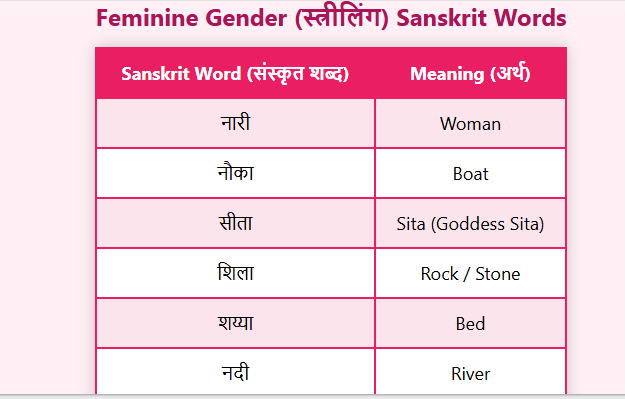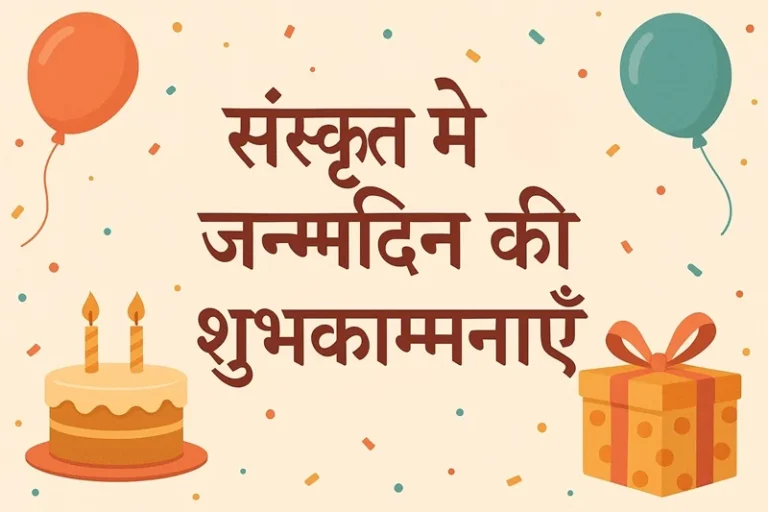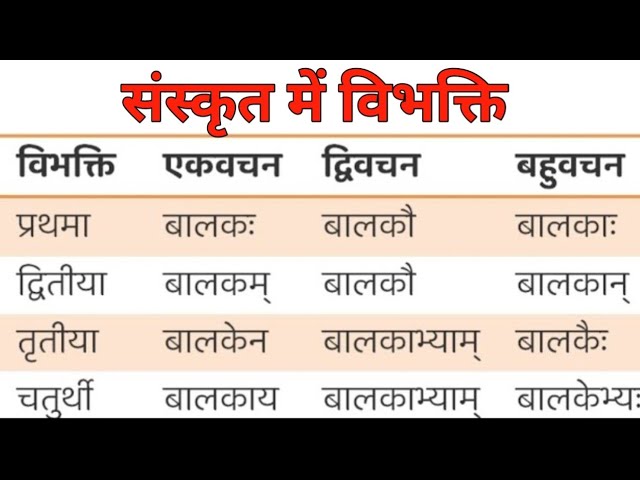Table of Contents
ToggleIntroduction
Sanskrit consists of three types of gender. They are male, female and gender neutral.
We should not say the gender after seeing any material. We have to look for words and assign the gender category. The gender assignment is unique in this language.
Sanskrit Names and Gender Forms
Popular Masculine Names:
Ram – रामः (Rāmaḥ), Shyam – श्यामः (Śyāmaḥ), Siva – शिवः (Śivaḥ), Vijaya – विजयः (Vijayaḥ), Krishna – कृष्णः (Kṛṣṇaḥ), Sekhar – शेखरः (Śekharaḥ), Dewa – देवः (Devaḥ), Madhawa – माधवः (Mādhavaḥ)
Popular Feminine Names:
सीता, गीता, उमा, सरस्वती, कोपिला, पार्वती, मल्लिका
(Sītā, Gītā, Umā, Sarasvatī, Kopilā, Pārvatī, Mallikā)
For Neuter:
मित्रम्, कमलम्, नाम
(Mitram, Kamalam, Naama)
Note For Connecting Words
- The word भवतः (bhavataḥ) is used to denote the masculine form.
- भवत्याः (bhavatyāḥ) is used to denote the feminine form.
- एषः (eṣaḥ) is used for masculine (he).
- एषा (eṣā) is used for feminine (she).
- तत् (tat) and एतत् (etat) are used for neuter (neutral gender).
Tabular Form Of Masculine
पुलिंग :बालक, राम:, कृष्ण: ,समुन्द्र:, दीप: पराग:, तट:, वृक्ष, जल

Here , राम:, कृष्ण: are Male as we know, but दीप: पराग:, तट: are also male according to the ancient linguistic. According to the English दीप: पराग:, तट: are neutral gender.
Tabular Form Of Feminine
स्त्रीलिंग: नारी , नौका, सीता , शिला, शैया ,नदी ,लेखनी ,मार्जनी

Tabular Form Of Neutral
नपुसकलिंग: पुष्पम्, फलम्, मन्दिरम्, वनम्, मित्रम्, जलम्, पुस्तकम्, यानम्

Note: We can not decide the gender of any material by looking, we have to look for the word.
For Male (पुलिङ्ग के लिए )-पुरुष / वचन
| पुरुष / वचन | एकवचनम् | द्विवचनम् | बहुवचनम् |
| उत्तमपुरुष | स: (He) | तौ(Two Male) | ते( They) |
| मध्यमपुरुष | त्वम्(You) | युवाम्(You two) | युयम्(Many You) |
| प्रथमपुरुष | अहम्(i) | आवाम्(Me with another one ) | वयम्(We) |
For Female(स्त्रीलिङ्ग के लिए )-पुरुष / वचन
| पुरुष / वचन | एकवचनम् | द्विवचनम् | बहुवचनम् |
| उत्तमपुरुष | सा( She) | ते(Two Girls) | ता:(Many Girls)) |
| मध्यमपुरुष | त्वम् | युवाम् | युयम् |
| प्रथमपुरुष | अहम् | आवाम् | वयम् |
For Neutral Gender (नपुसकलिङ्ग के लिए) –पुरुष / वचन
| पुरुष / वचन | एकवचनम् | द्विवचनम् | बहुवचनम् |
| उत्तमपुरुष | तत्(That One ) | ते (That Two) | तानी(That More than two) |
| मध्यमपुरुष | त्वम् | युवाम् | युयम् |
| प्रथमपुरुष | अहम् | आवाम् | वयम् |
पठ धातु रूप टेबल –– Path Dhatu Roop in Sanskrit
| पुरुष / वचन | एकवचनम् | द्विवचनम् | बहुवचनम् |
| उत्तमपुरुष | पठति (He/She read) | पठतः(For Two) | पठन्ति (They Read) |
| मध्यमपुरुष | पठसि(You Read) | पठथः For Two) | पठथ(You all Read) |
| प्रथमपुरुष | पठामि(I Read) | पठावः (For Two) | पठामः(We Read) |
Note : अब आप नयाँ वाक्य निर्माण कर सकते हे उसके लिए दो टेबल को जोड़ना पढेगा , पुरुष / वचन Table of पुलिङ्ग OR स्त्रीलिङ्ग OR नपुसकलिङ्ग with पठ धातु रूप टेबल
New Sentences After Joining The Table Will Be









Note : You have to join the table of (Male, Female, Neutral)पुरुष / वचन with पठ धातु रूप टेबल to make new sentences






